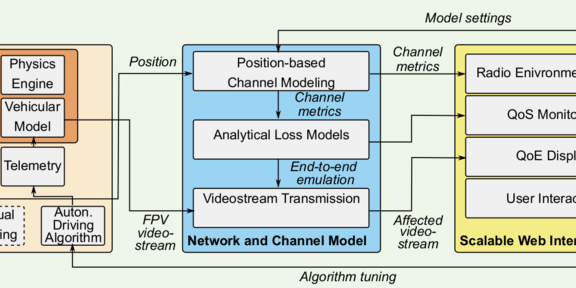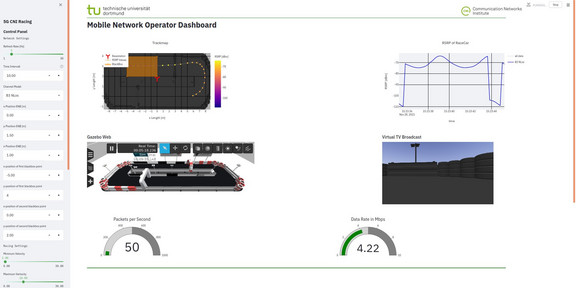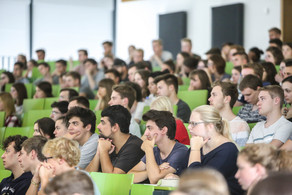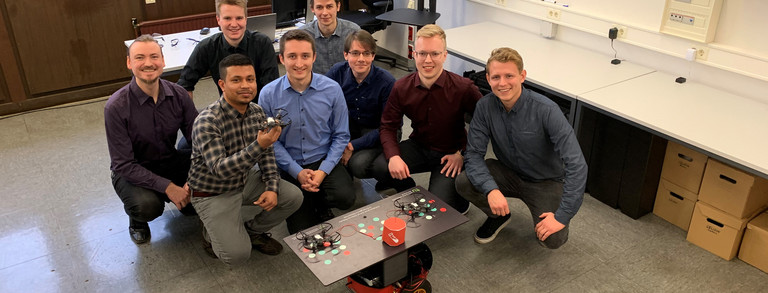Project Groups
5G-enabled Campus Networks for Intelligent Racing Events
- Project Group


The project group "5G-enabled Campus Networks for Intelligent Racing Events" (5G CNI Racing) took part in the summer semester of 2021. Through an agile approach, a scalable web interface for Quality of Experience (QoE)-oriented network planning was developed and coupled with seamless interaction to the underlying Robot Operating System (ROS) and 3D physics simulation (Gazebo).
Formula 1 racing events are a popular example for large events with a demand for high performance communication technologies and IT infrastructure requirements. The used technologies need to provide a ultra-reliable and high-throughput network connection. Thus, in this project group, we considered two different use-cases: Vehicle telemetry is safety-critical, although it does not cause high traffic. Contrary, UHD video streams rely on high data rates while not being mandatory in terms of reliability. The proposed network configuration consists of a 5G campus network focused on base coverage to serve various use-cases. However, due to environmental or financial limitations, a 100 % area-wide deployment may not be feasible, which will lead to black spots. Other technologies, such as Cellular Vehicle-to-Everything (C-V2X), have to be considered to guarantee application reliability, enhance coverage, and avoid performance mitigation in these black spots. Also, conventional Quality of Service (QoS) oriented network planning can not adequately represent the required dynamics and different technologies. Therefore, we propose augmented network planning which highlights the Quality of Experience (QoE) observed by the consumer by displaying the direct impact on the application.
A Graphical User Interface (GUI) delivers various features to observe and modify the current setup of the proposed Augmented Network Planning. The real-time monitoring displays the current position and measured network performance metrics at all times (Reference Signal Received Power (RSRP), corruption and data rate).In addition, a driver’s perspective is shown in a virtual TV broadcast, showing the First Person View (FPV) of the race car as a live video stream. Impacts on the QoE are displayed through broadcast corruption based on the current RSRP. Moreover, the network operator can directly modify the given scenario in real-time: Sliders on the left side allow the autonomous driver behavior modification, placement of the base station and black spot, and the current channel model. Overall, the GUI is reachable from the local network and concurrently supports different end devices. The backend system is designed in a modular fashion utilizing Docker containers. It features an end-to-end simulation of the race car and tracks with Robot Operation System (ROS) and Gazebo to determine the live position and mobility trace. Further, the system can seamlessly be executed by the user on any host system. Additionally, it could use a database for extended memory or be outsourced for cloud computing.
Further information:
Chairs: CNI
Supervisors: Caner Bektas, Cedrik Schüler
Start date: April 2021





